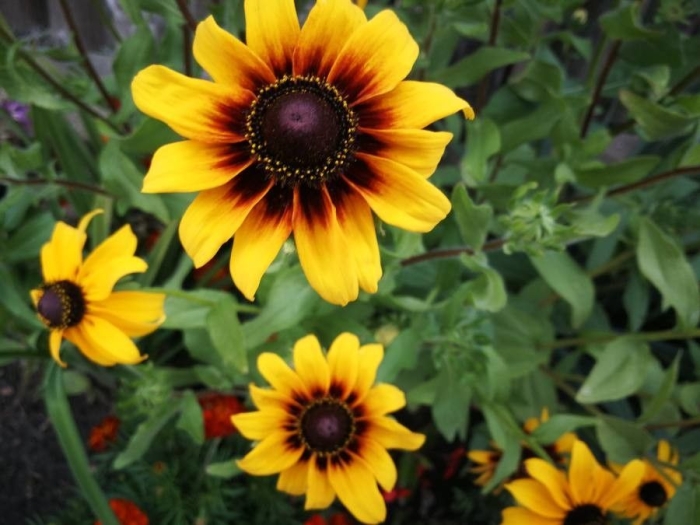Plains Coreopsis
(Coreopsis tinctoria)
Plains Coreopsis (Coreopsis tinctoria)
/
/

Carolyn Corporaal
CC BY-SA 4.0



















































Estimated Native Range
Summary
Plains Coreopsis is valued for its vibrant flowers and ability to attract pollinators, making it a popular choice for wildflower gardens, meadows, and borders. It is also used for cut flowers due to its long vase life. This species is relatively easy to maintain, tolerating a range of soil types, though it prefers sandy or well-drained soils. While it is somewhat drought-tolerant, it thrives with regular rainfall. Full sun is ideal for optimal flowering, but it can also tolerate partial shade. Plains Coreopsis can self-seed prolifically under favorable conditions, which can be a concern in some areas outside its native range. It is generally pest-free but can be susceptible to powdery mildew in humid conditions.CC BY-SA 4.0
Plant Description
- Plant Type: Herb
- Height: 2-4 feet
- Width: 1-1.5 feet
- Growth Rate: Rapid
- Flower Color: Yellow, Red
- Flowering Season: Summer, Fall
- Leaf Retention: Deciduous
Growth Requirements
- Sun: Full Sun
- Water: Medium
- Drainage: Medium, Slow
Common Uses
Bee Garden, Bird Garden, Butterfly Garden, Deer Resistant, Drought Tolerant, Groundcover, Hummingbird Garden, Low Maintenance, Rabbit Resistant, Rock Garden, Showy Flowers, Street Planting
Natural Habitat
Native to prairies and open woodlands of the Central and Eastern USA, grasslands and open areas of Western Canada, and Northeast Mexico
Other Names
Common Names: Garden Tickseed, Calliopsis, Dyer’s Tickseed, Goldenwave, Nuttal Weed, Painted Tickseed, Plains Coreopsis, Annual Coreopsis, Common Tickseed, Golden Coreopsis
Scientific Names: , Coreopsis tinctoria, Coreopsis tinctoria f. tinctoria, Coreopsis tinctoria subsp. tinctoria, Coreopsis nana, Coreopsis tinctoria var. atkinsoniana, Coreopsis cardaminefolia, Coreopsis atkinsoniana, Calliopsis tinctoria, Coreopsis elegans
GBIF Accepted Name: Coreopsis tinctoria Nutt.